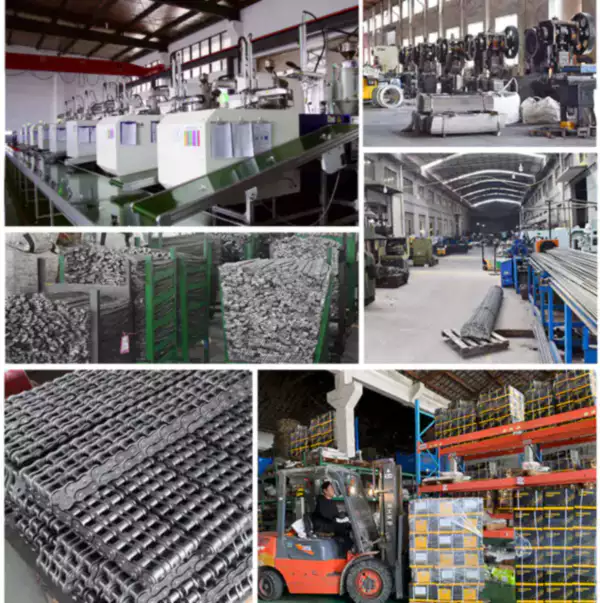Introduction
Gripper chains are an essential component in many industrial applications, providing secure grip and precise control over conveyed materials. To ensure optimal performance and longevity, it is crucial to follow a proper maintenance schedule. In this article, we will discuss the recommended maintenance practices for high-use gripper chains.
Regular Inspection
Inspecting gripper chains on a regular basis is fundamental to identify any signs of wear, damage, or misalignment. Visual examination should be accompanied by accurate measurements using specialized tools, such as micrometers and calipers. This proactive approach allows for timely repairs or replacements, preventing unexpected downtime and costly disruptions to manufacturing processes.

Lubrication
Proper lubrication is vital to maintain the smooth operation of gripper chains. Applying a suitable lubricant at regular intervals reduces friction, minimizes wear, and prevents corrosion. When selecting a lubricant, consider the specific environmental conditions and the type of material being conveyed. Applying the lubricant evenly across the chain's surface ensures consistent performance and extends its operational life.

Tension Adjustment
Gripper chains require proper tension to function optimally. Regularly check the tension and make adjustments as necessary. Too loose or too tight chains can lead to uneven wear, increased stress on components, and reduced gripping efficiency. Consult the manufacturer's guidelines to ensure the correct tension is achieved, and use appropriate tools, such as tension gauges, for accurate measurements.

Chain Cleaning
Dirt, debris, and contaminants can accumulate on gripper chains, affecting their performance and lifespan. Regularly cleaning the chains with approved solvents or cleaning agents helps remove foreign particles and maintain their optimal functionality. Ensure thorough drying before reapplying lubrication, and always follow safety guidelines when working with cleaning substances.
Replacement of Worn Components
Over time, certain components of gripper chains, such as pins, rollers, or sprockets, may wear out and require replacement. Regularly inspecting these parts and replacing them before critical failure is crucial to prevent unexpected breakdowns and ensure the overall operational efficiency of the system.
| Aspect | Considerations |
|---|---|
| Material | Choose the appropriate material based on the conveyed load, environment, and temperature. |
| Size | Select the right size that matches the application requirements. |
| Strength | Ensure the gripper chains have sufficient strength to handle the expected load. |
| Cost | Consider the purchase cost and the overall value provided by the gripper chains. |
| Supplier | Choose a reliable supplier with a proven track record in delivering high-quality gripper chains. |
Sprockets for Gripper Chains
Sprockets play a crucial role in the functioning of gripper chains, as they provide the necessary engagement and drive for the chains to operate smoothly. The compatibility and proper alignment between gripper chains and sprockets are essential for optimal performance.

At our company, we offer a wide range of sprockets specifically designed for gripper chains. Our sprockets are precision-engineered to ensure smooth engagement, minimize wear, and maximize the lifespan of both the gripper chains and the sprockets themselves. With our high-quality sprockets, you can achieve reliable and efficient operation in your gripping systems.
Our Advantages
- 1. Extensive industry experience – With years of experience in manufacturing gripper chains, we have gained valuable expertise and insights into meeting diverse customer needs.
- 2. Superior product quality – Our gripper chains are meticulously crafted using premium materials and advanced manufacturing processes, ensuring high durability and performance.
- 3. Customization options – We offer a range of customization options to tailor the gripper chains to specific application requirements, providing optimal solutions for our customers.
- 4. Timely delivery – We understand the importance of timely delivery and strive to ensure that our customers receive their orders promptly, minimizing any disruptions to their operations.
- 5. Excellent customer support – Our dedicated support team is always ready to assist customers with any inquiries, providing prompt and effective solutions.

Q&A
Q: How often should gripper chains be inspected?
A: Gripper chains should be inspected on a monthly basis or whenever there are noticeable changes in performance, such as increased noise or decreased gripping efficiency.
Q: Can any lubricant be used for gripper chains?
A: No, it is important to use lubricants specifically designed for gripper chains to ensure compatibility and optimal performance. Consult the manufacturer's recommendations for the appropriate lubricant.
Q: What are the consequences of improper tension in gripper chains?
A: Improper tension in gripper chains can lead to premature wear, increased stress on components, reduced gripping efficiency, and potential system failures.
Edited by Zqq.
